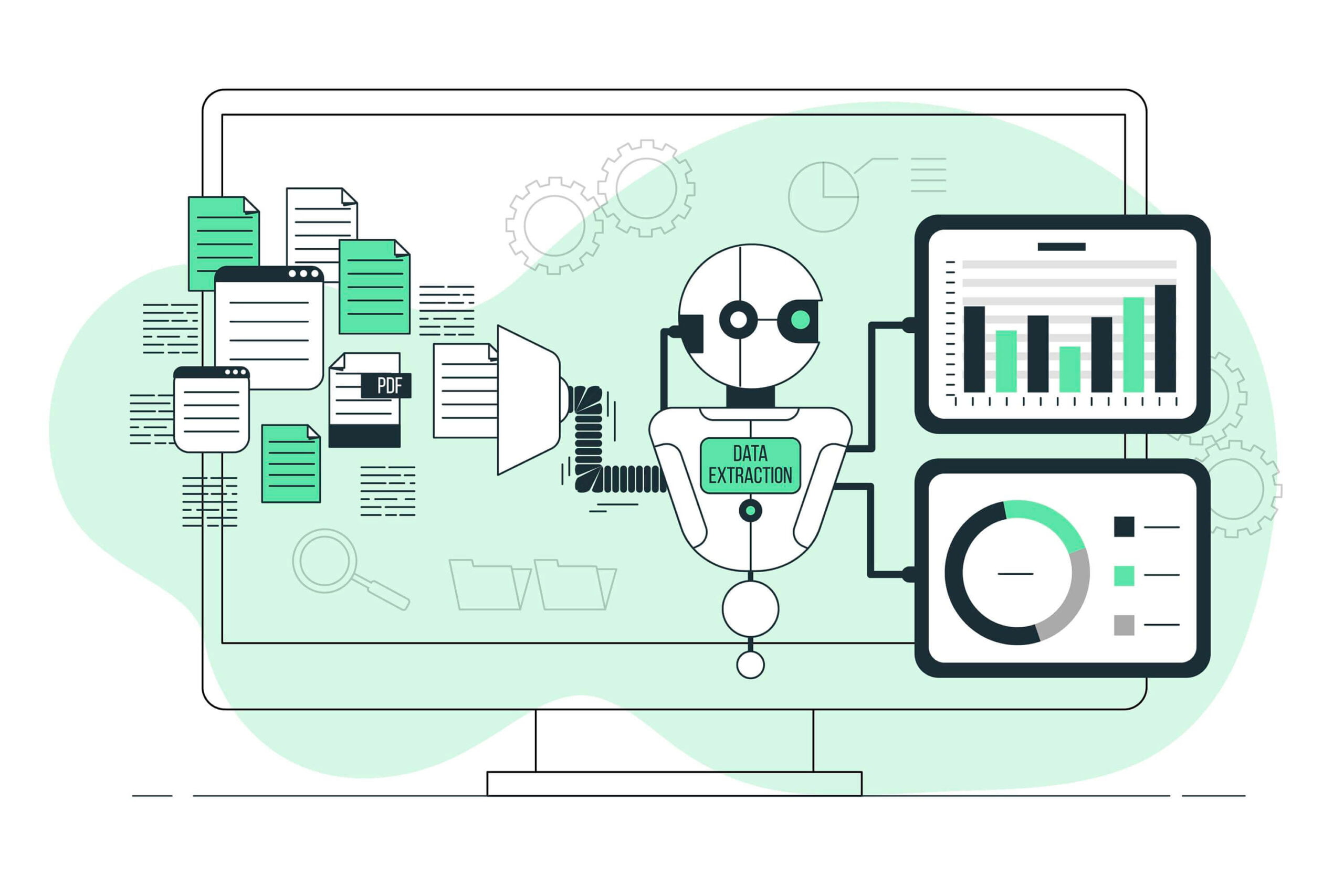Agricultural Data Collection: Understanding Agritech’s Role in Gathering Farm Data
- Data Precision and Accuracy: The quality of decisions depends on the precision and accuracy of the data collected. Stakeholders should be aware of the methodologies used in data collection, including the reliability of sensors, the resolution of satellite and drone imagery, and the robustness of data analysis algorithms.
- Timeliness and Relevance: The agricultural sector is highly dependent on timing, with specific windows for planting, fertilization, irrigation, and harvesting. Data must be collected and analyzed promptly to be actionable, making real-time or near-real-time data collection methods highly valuable.
- Data Integration and Interoperability: Agricultural data often comes from diverse sources, including on-ground sensors, drones, satellites, and traditional surveys. The ability to integrate and analyze data across these sources for a comprehensive view of agricultural operations is crucial. Stakeholders should prioritize platforms and systems that support data interoperability.
- Compliance and Data Privacy: With increasing focus on data privacy and protection, stakeholders need to ensure that data collection and storage comply with relevant regulations and ethical standards. This includes considerations around who owns the data collected and how it is used.
- Cost-effectiveness: While advanced data collection technologies offer significant benefits, they come with costs. Stakeholders must evaluate the return on investment (ROI) of different data collection methods, considering not only the direct costs but also the potential for improved yields, efficiency, and sustainability.
- Sustainability and Environmental Impact: Data collection is not just about improving yields and profitability; it also plays a crucial role in managing resources efficiently and reducing the environmental footprint of agricultural practices. Stakeholders should be aware of how data can guide more sustainable farming practices.
- Scalability: Solutions need to be scalable to be applied across different sizes of farms and varying agricultural contexts. Stakeholders should consider how easily a data collection method can be scaled up or adapted to different crops, climates, and farming practices.
- Accessibility and Usability: The best technology is of little use if it is not accessible to the end-user. Data collection and analysis tools should be designed with the end-user in mind, ensuring that farmers and agricultural workers can easily understand and act on the insights provided.
- Security: As with all digital technologies, cybersecurity is a significant concern. Stakeholders must ensure that the data collected is securely stored and transmitted to protect against unauthorized access and potential data breaches.
By keeping these points in mind, agribusiness stakeholders can better navigate the complexities of agricultural data collection, leading to more informed decision-making, enhanced operational efficiency, and sustainable farming practices that are resilient in the face of changing global conditions.
Methods of Collecting Agricultural Data
Soil Sampling and Analysis
This traditional method involves collecting soil samples from different parts of a farm to analyze nutrient content, pH levels, moisture, and other characteristics essential for crop health and soil management.
Remote Sensing
Satellite imagery and aerial photography from drones offer a bird’s-eye view of farmland, enabling the monitoring of crop health, estimation of yield sizes, and detection of pests and diseases. This technology allows for large-scale analysis without the need for physical presence on the field.
Sensors and IoT Devices
The use of ground-based and aerial sensors, including IoT (Internet of Things) devices, collects real-time data on various parameters such as soil moisture, temperature, crop health, and environmental conditions. These sensors can provide detailed, continuous data streams for precise farm management.
Mobile Applications
Specialized mobile apps enable farmers to record and track various farm activities and observations directly from the field. These apps can simplify data entry, storage, and analysis, making information more accessible and actionable.
Satellite Imaging
Satellite imaging offers a comprehensive view of agricultural lands from space, allowing for the monitoring of crop health, land use changes, and environmental impacts over large areas. This method provides valuable data on vegetation indices, such as NDVI (Normalized Difference Vegetation Index), which helps in assessing plant health, predicting yields, and managing crop stress. Because satellites cover vast areas regularly, they enable consistent monitoring over time, which is crucial for tracking changes and planning interventions.
Drone Imaging
Drone imaging involves the use of unmanned aerial vehicles (UAVs) equipped with cameras and sensors to capture high-resolution images of agricultural fields. This method allows for detailed monitoring of crop health, pest infestations, and water stress at a much finer scale than satellite imaging. Drones can be deployed quickly and flown at low altitudes, providing flexibility and precision. The data collected supports precision farming practices, enabling targeted interventions, efficient resource use, and improved crop management decisions.
How Qaltivate Can Help Your Agribusinesses
Our expertise allows us to help you:
- Implement Advanced Data Collection Tools: Introduce precision agriculture tools like sensors, drones, and satellite imagery for accurate and comprehensive data collection.
- Develop Custom Software Solutions: Create tailored software that integrates various data sources for a unified, accessible view of all farm data.
- Deploy Data Analytics Platforms: Utilize big data analytics and machine learning algorithms to extract actionable insights from collected data, optimizing farming decisions.
- Ensure Data Integration and Interoperability: Facilitate seamless data exchange between different agricultural software and hardware used in farming operations.
- Offer Training and Support: Provide training for farmers and agricultural workers on how to use data collection and analysis tools effectively.
- Enhance Data Security and Privacy: Implement robust security measures to protect sensitive agricultural data from unauthorized access and breaches.
- Promote Real-time Data Access: Enable real-time data monitoring and alerts to allow for timely decisions based on current field conditions.
- Support Decision-making with Predictive Analytics: Use predictive modeling to forecast future trends in weather, crop health, and market conditions, aiding in proactive farm management.

Ask yourself these questions to evaluate your use of data
- Am I collecting data that is relevant to my key operational decisions?
- Consider whether the data being collected directly supports decision-making processes.
- Do I have access to real-time or near-real-time data for timely decision-making?
- Assess if the current data collection setup allows for quick responses to changing conditions.
- Is the data being integrated in a way that provides a holistic view of my farm?
- Evaluate if all data sources are combined to offer comprehensive insights.
- Am I leveraging predictive analytics to anticipate and mitigate potential risks?
- Reflect on the use of forecasting tools for weather, pests, diseases, and market prices.
- Are there any manual processes that could be automated to improve data accuracy and efficiency?
Identify areas where automation could reduce errors and save time. - How secure is my data, and who has access to it?
- Consider data security measures and access controls to protect sensitive information.
- Am I using data to improve sustainability and reduce environmental impact?
- Reflect on how data aids in resource management, such as water usage and chemical applications.
- Do I have the necessary training and support to analyze and interpret the data effectively?
- Assess if additional training or support could enhance the ability to use data tools and analytics.
- Am I actively tracking the ROI of my data collection and analysis investments?
- Consider whether investments in data technologies are leading to measurable improvements in yields, efficiency, or cost savings.
- How could I better share data insights with stakeholders (e.g., employees, advisors, partners) to improve collaboration?
- Evaluate the effectiveness of communication channels and collaborative tools for sharing insights.
By addressing these questions, farmers can identify gaps in their current data use practices and explore IT solutions to enhance their data collection, analysis, and overall farm management strategies.
Use Qaltivate experience
FAQ
1. What is agricultural data collection, and why is it important?
2. How does Agritech contribute to agricultural data collection?
3. What are the benefits of using Agritech in data collection for farmers?
The benefits for farmers include enhanced decision-making capabilities, increased crop yields, and reduced resource waste. Agritech enables precision agriculture, allowing farmers to apply the right amount of water, fertilizers, and pesticides exactly where needed, improving the sustainability of farming practices. Additionally, farmers can predict crop yields more accurately and plan their operations more effectively, leading to increased profitability and resilience to climate change.
4. Are there any challenges associated with agricultural data collection using Agritech, and how can they be addressed?
Yes, challenges include the high costs of advanced technology, the need for technical skills to operate and interpret data from new technologies, and concerns about data privacy and security. Addressing these challenges requires investment in training and capacity building for farmers and agricultural professionals, developing cost-effective technology solutions accessible to small-scale farmers, and establishing clear regulations to protect data privacy and security. Collaboration between technology providers, governments, and agricultural organizations is essential to overcome these obstacles and fully leverage Agritech's potential in agricultural data collection.




